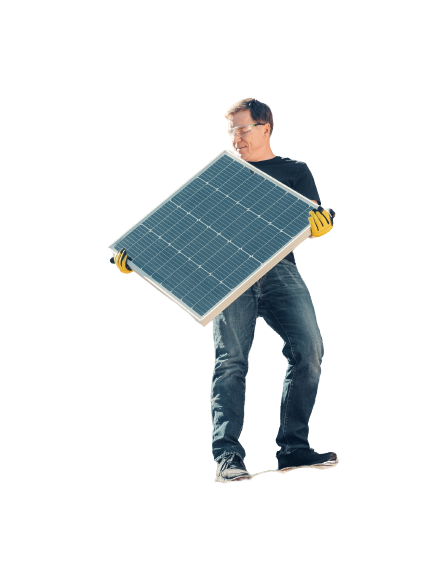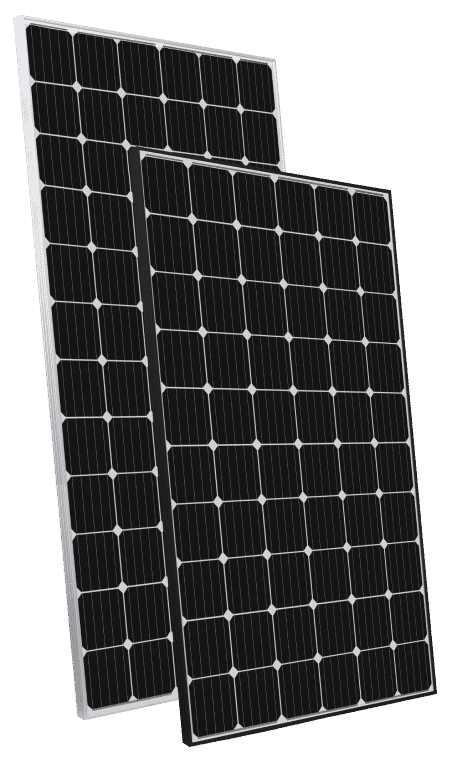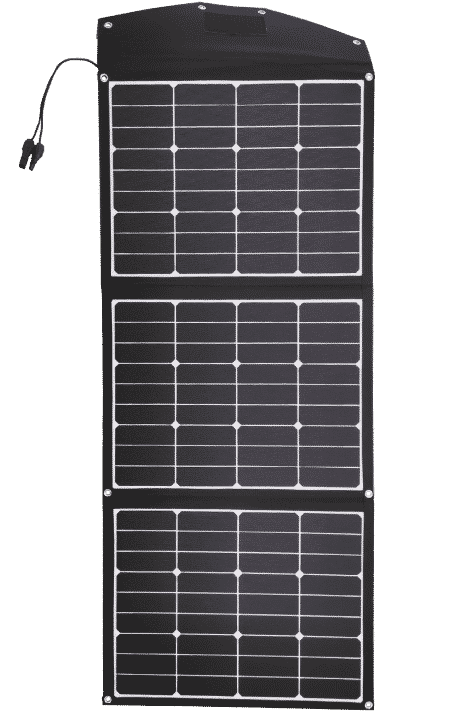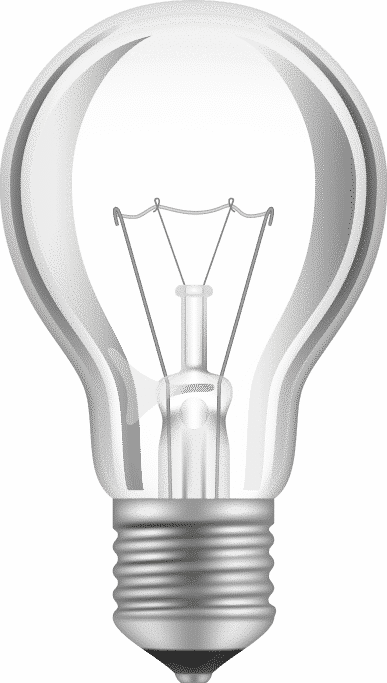Solar PV system

Solar PV System
Photovoltaic systems, also known as solar power systems or PV systems, are electric power systems that use solar energy to produce usable power. It is composed of several components. These include solar panels that absorb sunlight and convert it into electricity, a solar converter to turn the output from direct current to alternating, and mounting, cabling and other electrical accessories. A solar tracking system may be used to enhance the system’s overall performance. It could also include an integrated battery.
The PV system converts light directly to electricity. They are not to be confused or misunderstood with other solar technologies such as concentrated solar power, solar thermal, which is used for heating and cooling. The visible portion of a solar array is the solar panels. It does not include the rest of the hardware. This is often called balance of system (BOS).
There are many types of PV systems, from small rooftop-mounted systems to larger, more powerful power stations with hundreds of megawatts to large, utility-scale power plants. Most PV systems today are connected to the grid, but a few stand-alone or off-grid systems make up a small percentage of the market.
The silent operation of PV systems is without moving parts and no environmental emissions. They have evolved from niche market applications to a mainstream technology for electricity generation. Rooftop systems can recoup the cost of manufacturing and installation in 0.7 to 2 year and produce about 95% of net renewable energy over their 30-year lifespan.
Prices for photovoltaic systems have fallen rapidly since their introduction due to the rapid growth of this technology. They vary depending on the market and the size system. Prices for residential 5-kilowatt systems were $3.29 per unit in the United States in 2014. Today, solar PV modules make up less than half the overall system cost. The rest is left to BOS-components, soft costs and customer acquisition. These include inspection, interconnection and labor costs.
A Solar PV System: The Essentials
Solar PV systems can be any combination of solar panels and the hardware required to allow the energy flow through them. Inverters are also available.
They can use string inverters or microinverters depending on the system, but the fundamental makeup of all PV systems is the exact same.
What does solar energy do in a PV system?
Solar panels convert photons (light particles)into electricity. This is known as the photovoltaic process.
Photovoltaic (PV), when a photon strikes a device that converts energy to local electrons, the energy of the photon is transferred to the material. These excited electrons produce an electric current.
The solar cells within the panels produce direct current electricity (DC), which is usually converted by an inverter to alternating current electricity (AC). It can then be sent back to an electric grid that operates with AC electricity.
This is the detailed explanation. The three main steps that make up the operation of solar panels are:
- The solar cells in solar panels absorb sunlight, which causes electricity to flow.
- An inverter converts DC electricity into AC electricity.
- This electricity is used for current energy needs in the customer’s home. Any excess electricity that the customer does not use is exported to a grid.
What happens to the energy a PV system produces?
Grid-connected solar installations are the norm for most solar customers in America. Their home is connected with the electric grid. This allows them to consume more energy than their solar installations are producing, such as during a rainy or night.
This also means that if their PV system produces more energy than they need, the excess energy can be sent back to the grid to be used by others.
Net Metering
Net metering is a policy that compensates customers for excess energy so they can offset future electricity costs from the grid. It is common in the U.S.
The net metering system has been a major factor in solar energy’s cost-effectiveness. We are starting to see changes in Nevada Solar Group that implements net-metering across the country. Many of these changes reduce the value solar customers get from their solar installations.
Feed-in Tariffs
Feed-in tariffs can be used to compensate solar customers for electricity they send to the grid from certain areas.

What are the parts of a photovoltaic system?
Other than the solar panels, there are a number of important components to a photovoltaic system. These are often referred to as the balance of the system or BOS. Wiring, Inverters (racking), and combiners, electric meters and circuit breakers are examples of these elements, which typically account for more than half of the system cost and the majority of the maintenance.
Solar Panels
A solar panel is made up of several solar cells that have semiconductor properties and are protected from the elements by a material. These properties allow the cells to absorb light or, more precisely, photons from sunlight and convert them into electricity using a process known as the photovoltaic effect. Along either corner of the semiconductor, there is a layer of conductive materials. This conducts the generated electricity. The lighted side of the panel has a pro coating to reduce reflection losses. Crystalline silicon is the most common type of solar panel. It has a theoretical efficiency limit at 33% to convert sunlight into electricity. Other semiconductor materials and solar cells technologies are available that have higher efficiencies but come at a higher manufacturing cost.
Inverters
An inverter, an electrical device that accepts electric current in the form direct current (DC), and converts it into alternating current (AC), is called an inverter. This means that the DC current from a solar array is fed to an inverter, which converts it into AC. This conversion is required to power most electronic devices and interface with the electricity grid. Inverters are essential for nearly all solar energy systems. They are often the most expensive component, after the solar panels.
Inverters with conversion efficiencies greater than 90% have important safety features such as ground fault circuit interruption and Anti-islanding. They shut down the PV system if there is a loss in grid power.


Racking
Racking is the method of fixing the solar array to the ground, or to a rooftop. These devices, which are typically made from aluminum or steel, mechanically fix the panels to the ground or rooftop with high precision. Racking systems must be able to withstand severe weather conditions such as tornado-force winds and high snow accumulations. To prevent electrocution, racking systems must be electrically bonded and grounded to the solar array.
Rooftop racking systems come in two types: flat roof systems or pitched roof systems. Weighted ballast is commonly used on flat rooftops to hold the range to the ceiling by gravity. Pitched roofs should be mechanical means attached to the racking system. Ballast or robotic anchors can be used to secure ground-mounted PV systems. Trackers that use motors or detectors to follow the Sun through space are also examples of ground-mounted racking systems. This increases energy generation while decreasing equipment maintenance costs.
Other Components
Combiners, disconnects and breakers, meters, and wiring are the remaining components of a typical PV system. The solar combiner is a device that combines multiple electrical cables into one. The majority of solar combiners include protection fuses and can be used with all utility-scale and medium-sized solar arrays. Disconnects can be described as electrical gates or switches that allow manual disconnection of an electric wire. These devices are usually used in conjunction with an inverter. They can be found on the “DC disconnect”, or “AC disconnect”, and provide electrical isolation for when an inverter is needed to be replaced or installed. Circuit breakers, or breakers, protect electrical systems against over current or surges. Breakers are designed to be activated automatically when current exceeds a predetermined level. However, they can also be manually operated and act as an additional disconnect.
An Electric Meter measures the energy passing through it. It is used by Nevada Solar Group to charge customers and measure their usage. To measure the energy generated by solar PV systems, a bi-directional battery powered meter is required. The wiring, or electrical cables that transport the electric energy between the components must be properly sized in order to carry the current. Protective measures must be taken against sunlight exposure. Wires carrying DC current may require additional protection with metal sheathing.

How does solar PV system efficiency affect?
It is important that you remember that solar energy does not produce electricity at 100% efficiency. The efficiency of a PV system can be affected by environmental factors, such as temperature, soiling and shading, as well as electrical component losses. The following are some examples of loss:
Temperature: The efficiency of solar panels varies according to their temperature. Performance can be affected by high temperatures.
Soiling: A layer of material that covers PV panels can block sunlight from reaching solar cells and reduce the power generated. The amount of power lost due to soiling can vary depending on how often the panel is cleaned and the type of soiling (such snow or dust).
Shading refers to the blocking of sunlight by trees, buildings, terrain and other objects. Variable effects of shading can have a significant impact on the solar system’s power output. This article and the section in our PV system losses series provide great information about shading.
Connectivity and wiring: A solar installation’s electrical connections can cause resistance, which results in energy losses up to a few percent.
Mismatch: Modules of the same type may have slightly different electrical characteristics due to manufacturing variations. This can cause performance problems.
Inverter Efficiency: An inverter converts DC to AC current at a rate of 96-97%. When the DC input power is high, inverters have a higher efficiency. When the input power is lower than the rated power, the conversion efficiency suffers.
Age: As they age, solar panels produce less energy. The decrease in performance is usually around 0.5% per annum.
System Derate Factor
The efficiency of a solar panel (or module) refers to the percentage of sunlight that a module converts to electricity under standard conditions (STC; ambient temperature of 25degC, irradiance 1000W/m2).
Solar PV System Companies
The most precise information will be provided by our solar panel cost and savings calculator. This will allow you to assess the potential solar savings for your home before you make a decision.
Nevada Solar Group offers independent reviews and expert ratings for more than 3,000 solar panel businesses, as well as all major brands and models. This website provides more information on the products and services of our solar companies.
Get your free quote today
Are you fed up with paying too much for electricity in Las Vegas? Nevada Solar Group is a solar company that can design and install the best solar power systems for your home. Get a free quote and get your solar panel installed.

Contact Us For A Free Solar Quote
First name is required
Last name is required
Email is required
Phone is required
Please enter a valid property address
Property address is required
Schedule Your Appointment
ATTACH YOUR UTILITY BILL (optional)
Some information is missing or is incorrect, please fix the issues above and resubmit.
Thank you for your request
Your appointment has been added to our calendar.
The consultation will be online or over the phone. Please prepare a copy of your electric bill or energy usage history for your consultant to give you the most accurate proposal.